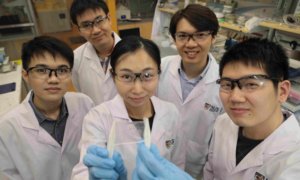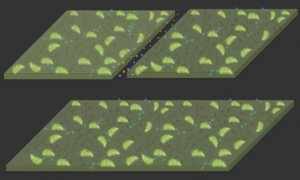If you said you never owned a pair of shoes that hurt you to part with, you’d be lying. We all have that one story about some shoes that were just the perfect fit.
Thanks to researchers at the University of Southern California Vitrebi School of Engineering, now you’ll never see your favorite shoes break down.
Assistant professor Qiming Wang joined forces with Viterbi students Kunhao Yu, An Xin, and Haixu Du, and University of Connecticut Assistant Professor Ying Li to create a material that can not only be manufactured quite quickly but can also repair itself.

By 3-D printing this material with photopolymerization (a photopolymer is a light-activated resin that changes properties when exposed to light) and introducing an oxidizer at a certain ratio, they created a rubber that can repair itself even after it has gone through severe damage such as being cut in half.
“When we gradually increase the oxidant, the self-healing behavior becomes stronger, but the photopolymerization behavior becomes weaker.
There is competition between these two behaviors. And eventually we found the ratio that can enable both high self-healing and relatively rapid photopolymerization.”
– Qiming Wang
The team can print a 17.5mm square in just 5 seconds, while an entire object can be printed out in 20 minutes, give or take. After the process is done, the finished object can repair itself in a matter of hours.
They demonstrated the material’s ability to heal itself in a wide range of products, from shoe pads to soft robot to multiphase composites and an electronic sensor.
According to the results of their study, the repair time can be increased or decreased simply by raising or lowering the temperature; after being cut in half, the material healed itself in only two hours at 60 degrees Celsius.
“We actually show that under different temperatures – from 40 degrees Celsius to 60 degrees Celsius – the material can heal to almost 100 percent,” Kunhao Yu said. “By changing the temperature, we can manipulate the healing speed, even under room temperature the material can still self-heal”
Unfortunately, for the moment, the researchers haven’t found a way to mass produce the product but the team is working diligently to develop other types of self-healing materials that can present various degrees of stiffness, from the soft rubber they used in their tests to harder plastics.
Such materials could be used for vehicle parts and other composite materials, as well as body armor.
Follow TechTheLead on Google News to get the news first.























